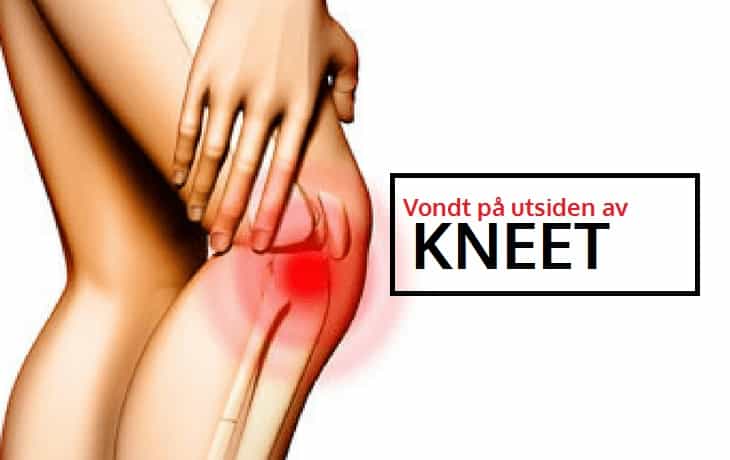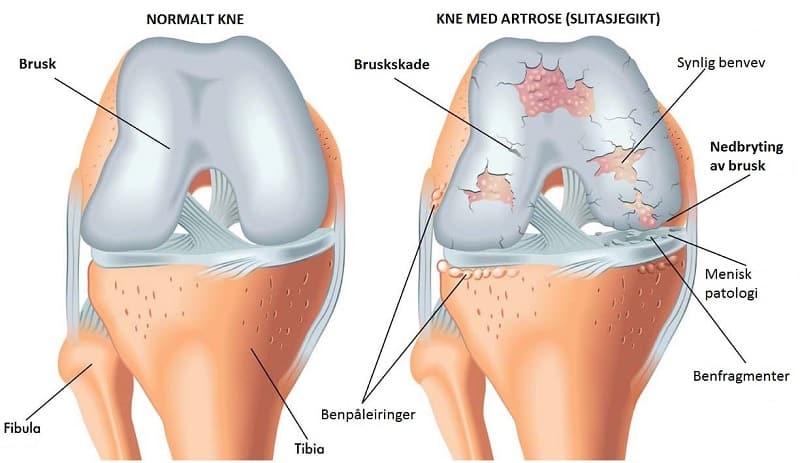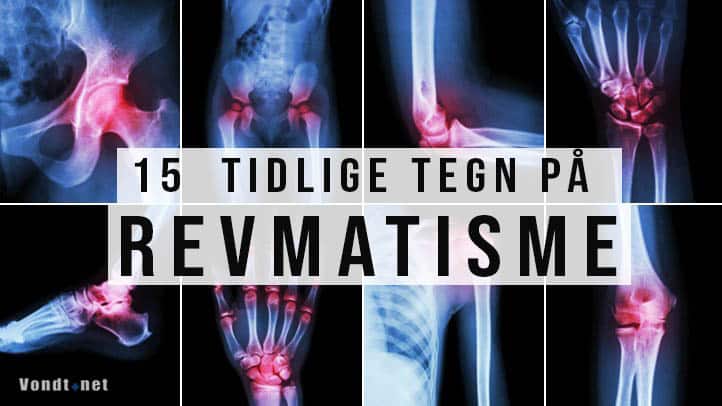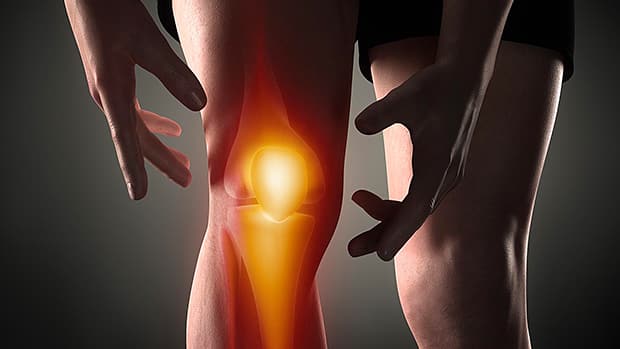
Pain on the Outside of the Knee | Cause, diagnosis, symptoms, exercises and treatment
Pain on the outside of the knee? Here you can learn more about lateral knee pain, symptoms, cause, exercises and diagnoses of pain on the outside of the knee. Follow and like us too Our Facebook page for free, daily health updates.
- It is called lateral knee pain in the technical language
Are you suffering from pain on the outside of your knee? This is also known as lateral knee pain in the technical language - where lateral refers to the outside of the knee, i.e. where the knee is farthest from your other knee. Such knee pain can occur in one knee or both (both left and right) - and is normally due to overload due to trauma or improper loading over a long period of time. If you have long-term pain on the outside of the knee, we strongly recommend that you see a publicly authorized healthcare professional, such as a doctor, physiotherapist or modern chiropractor for an examination and possible treatment.
The Pain Clinics: Our Interdisciplinary and Modern Clinics
Our clinic departments at Vondtklinikkene (click here for a complete overview of our clinics) has a distinctively high level of professional expertise in the investigation, treatment and rehabilitation of knee diagnoses. Contact us if you want the help of therapists with expertise in knee pain.
Knee structure
The knees are advanced biomechanical structures that have a great responsibility in relation to weight transfer, gait and general functionality. They are anatomically composed of tendons, ligaments, ligaments, mucous membranes, meniscus (both the medial meniscus and lateral part of the meniscus), as well as associated stability muscles in the thigh and leg.
Precisely because the knees have so many structures that can give pain signals and malfunction, so there are several possible causes and diagnoses that can provide a basis for hurting the knee. As a very quick overview of some of the most common causes of pain on the outside of the knee, we can mention:
- Too tight iliotibial band in combination with tensor fasciae latae problem.
- Meniscus Injury / rupture or irritation of the lateral meniscus.
- Injury to the lateral collateral ligament.
- Damage tissue in the calf muscles (most often the gastrocsoleus) or the thigh muscles (usually the outer quadriceps).
- Tight calf muscles or thigh muscles (especially vastus lateralis, part of the quadriceps muscles, are often responsible here).
This is just a quick overview, and you will find even more reasons in the next section - where we will go into more detail on why you have pain outside the knee and what diagnoses may be the cause of it.
Relief and load management for knee pain
Pain from the knee should always be taken seriously. Ignoring knee pain is never smart in the long run. We always recommend that you deal with the problems early - so that you reduce the risk of worsening or of it becoming chronic. One knee compression support is a good self-measure that can help you relieve your painful knee. It works by increasing blood circulation to the knee's muscles, cartilage and tendons - at the same time as providing increased stability and shock absorption during stress.
Tips: Knee compression support (The link opens in a new window)
Click on the image or link to read more about the knee compression support and how it can help your knee.
Causes and diagnoses: Why do I have pain outside of the knee?
As mentioned earlier, there are a number of causes that can be involved, partially or wholly, in your knee pain. Some possible causes of such pain on the outside of the knee include:
Trauma / knee injury
Trauma and injuries can occur both acutely (falls, twists and the like) or due to prolonged incorrect loading (for example, load injuries over many years due to walking on hard floors in a work context). Some examples of acute knee injuries are, for example, a twist or tackle when playing sports - and then most often in football or handball.
Prolonged knee injuries, on the other hand, occur because the strain in everyday life exceeds your capacity. When we talk about capacity, we are primarily talking about the stability muscles in the hips, thighs and legs. This is because a lack of strength in these muscles can, in the long run, lead to both irritation and damage to joints, cartilage, meniscus, tendons and ligaments. In fact, the majority of functional knee problems are due to a lack of strength in the hip muscles. If you feel hit by this - then we can highly recommend these exercises.
Read more: - 6 Exercises for Stronger Hips

If you suspect a knee injury, we also strongly encourage you to have this investigated. Never let pain persist over time without getting a clinician to look at this - it's a bit like ignoring the warning light on the car; not fooled in the long run.
The two most common causes of pain in the outside of the knee: Iliotibial band syndrome and lateral meniscus injury
We first want to start with the two most common causes of pain on the outside of the knee - namely iliotibial band syndrome and damage to the lateral meniscus. In the majority of cases of knee pain, it is usually a functional diagnosis rather than a structural diagnosis - where the first means that the pain often comes from associated muscles or dysfunction in the foot, ankle, hip or back. The majority of patients have a very good effect of musculoskeletal treatment in combination with adapted training in the form of home exercises.
Iliotibial band syndrome
The iliotibial band is a fibrous band that runs from the outside of the hip down to the outside of the knee. Pain in this structure often occurs due to repetitive strain that involves bending the knee - such as running, cycling, swimming and climbing.
If such an overload occurs, then the fibers in the iliotibial band can tighten and become pain sensitive. This tightening can cause the fibers to rub against the outside of the knee - which in turn can lead to local pain and swelling. Typically, the pain is often of a mild nature, but it gets worse and worse as the diagnosis develops in a negative direction. This best treatment for this diagnosis is to calm down temporarily in relation to provocative activities and receive physical treatment (often a combination of soft tissue work, needle treatment and other muscular techniques - in combination with home exercises). It is also recommended that you use knee compression clothing to increase the local blood circulation around and in the knee - which in turn leads to faster repair. Other good measures include the use of trigger point balls and foam roll.
Symptoms of iliotibial band syndrome may include:
- Pain when running or cycling on the outside of the knee
- A squeaking sound in the knee as the band rubs against knee structures
- Persistent pain after exercise and strain
- The knee is pressurized by touch
- Compensatory pain in the hip and seat on the same side of the problem
- Possible redness and heat on the outside of the knee
Lateral meniscus injury (meniscus rupture)

The meniscus of the knee is divided into an outer (lateral) and an inner (medial) part. When talking about pain on the outside of the knee, one must examine whether it may be an irritation or damage to the lateral meniscus, as this can lead to pain on the outside of the knee. The lateral meniscus is the part of the meniscus that sits on the outside of the knee - furthest from the other knee.
The meniscus is like a medium-hard protective cartilage that protects the knee and connects the femur to the tibia. Damage to this cartilage can occur over a long period of time (for example due to being overweight) or it can occur in an acute manner (for example, during a football pitch, fall or twist).
A meniscus injury can be significantly better with proper exercise and use, for example compression socks (opens in new window), which increases blood circulation to the injured area.
Read more: meniscus (Meniscus damage)
So now we have gone through the two most common causes of pain on the outside of the knee, but of course they are not the only ones that can cause pain in this part of the knee. In the next section, we review other diagnoses and causes that can cause local, lateral knee pain.
Knee arthritis (wear of the knee joint)

- Here we see an example of osteoarthritis of the knee. Osteoarthritis mainly affects weight-bearing joints.
Wear and tear in a joint is known as osteoarthritis (osteoarthritis). Such joint wear can occur due to incorrect loading or overload over a longer period of time. An example may be due to compression in the knee joint due to overweight and lack of strength in the associated stability muscles in the hip, thigh and calves. The most common is that the meniscus and cartilage wear down most on the inside of the knee, but it can also occur on the outside of the knee - which then means that the pain occurs in that region.
Knee osteoarthritis is common - and the more common the older you are. The vast majority of cases of osteoarthritis are asymptomatic, but in certain cases it can cause pain and cause functional compensation problems in associated structures.
With such wear changes, it is common that the pain on the outside of the knee is worse in the morning and then gets better when you get to move a little - then often after about half an hour or hour.
Read more: Osteoarthritis (Osteoarthritis)
Lateral plica syndrome
A synovial plica is a structure described as a folded membrane between the patella and the tibiofemoral joint. The vast majority of cases of plica are asymptomatic - and research has shown that almost 50% of us have them in the knee. We have four such structures in the knee:
- Suprapatellar plica
- Mediopathels plica
- Infrapatella plica
- Lateral plica
The lateral plica is the structure that can cause symptoms and pain to the outside of the knee. It is thus a matter of the folded membrane forming an unnatural tissue fold which can lead to the knee function changing and becoming painful. The condition can be treated conservatively with good effect.
Rheumatic arthritis of the knee
This joint disease is a form of rheumatism in which the body's own immune system attacks its own joints and weight-bearing structures. Such an autoimmune response occurs when the body's own defenses misinterpret its own cells as enemies or pathological invaders. In connection with the ongoing reaction from the immune system, joints may swell and become reddish in the skin. Eventually, the damage to bone structures and joints will be so extensive that it may in the worst case be necessary with a prosthesis in the knee or hip - therefore it is important to train preventively if you have been diagnosed with this condition.
Rheumatoid arthritis of the knee can affect any part of the knee - including the outside of the lateral meniscus and associated joint structures. These attacks can cause pain in the lateral part of the knee, as well as a number of other symptoms, such as:
- Swelling of the knee
- Knee inflammation
- Fluid accumulation in the knee
- Reddish and pressurized skin where the knee is inflamed
Also read: 15 Early Signs of Rheumatism
Treatment of pain on the outside of the knee
As you have seen in this article, pain on the outside of the knee can be caused by a number of different diagnoses - and therefore the treatment must also be individually tailored. A good start to get the right treatment is a thorough examination and clinical examination by a publicly authorized clinician with expertise in muscles, tendons and joints. The three professions with public health authorization with such expertise in Norway are physiotherapist, chiropractor and manual therapist.
Common treatment methods used for knee pain are:
- Physical treatment: Trigger point therapy (muscle knot therapy), massage, stretching and stretching are all parts of the umbrella term of physical therapy. This form of treatment aims to reduce soft tissue pain, increase local blood circulation and remodel tense muscles.
- Joint Mobilization: If your joints are stiff and hypomobile (not moving), then this can lead to a changed gait, incorrect movement pattern (for example that you look like a robot when you do something physical) and hence also irritation or pain in the associated musculature and soft tissue. A chiropractor or manual therapist can help you promote normal joint function, as well as help you with sore muscles and tendon injuries. Hypomobility in the hip and pelvis can also lead to increased strain on the knees.
- Training and training: As mentioned earlier, it is extremely important to strengthen the hip muscles, as well as local knee muscles, to be able to withstand more strain and thus reduce the chance of relapse or aggravation of the pain. Based on a clinical examination, a clinician can prepare a training program tailored to you and your muscular imbalances.
Summarizeringing
Pain on the outside of the knee can be due to a number of reasons - which should often be examined by a clinician and then addressed in order to avoid further damage to the knees. We place particular emphasis on increased training of the hips and thighs when it comes to the prevention and treatment of lateral knee pain. Do you have questions about the article or do you need more tips? Ask us directly via our facebook page or via the comment box below.
NEXT PAGE: - This You Should Know About Knee Pain
Click on the image above to proceed to the next page.
 Follow Vondt.net on YOUTUBE
Follow Vondt.net on YOUTUBE
(Follow and comment if you want us to make a video with specific exercises or elaborations for exactly YOUR issues)
 Follow Vondt.net on FACEBOOK
Follow Vondt.net on FACEBOOK
(We try to respond to all messages and questions within 24-48 hours. We can also help you interpret MRI responses and the like.)







Leave a reply
Want to join the discussion?Feel free to Contribute!